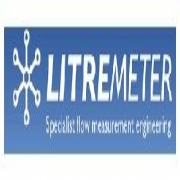 Add My Company
Add My Company
Sign In

Positive displacement flowmeters, sometimes known as PD meters, have been around for more than 100 years. They are commonly used in a wide range of applications from domestic water measurement to measuring ultra flow rates of chemical at high pressures subsea.
First off – what is a positive displacement meter? Well, as the name suggests it involves the positive displacement of a volume of fluid – this is usually a liquid but there are some units suitable for gas. There is a chamber and inside the chamber, obstructing the flow, is a rotor.
The shape of the rotor and chamber vary greatly with each meter type but they all provide an output for each rotation. Most meter designs therefore lend themselves to being totalisers. Most can have the flow rate calculated from this primary data.
Advantages
An accurate PD meter will have minimal leakage across the rotor seal. This is generally minimised with the use of more viscous liquids and accuracies of ±0.1per cent are sometimes quoted. On the other hand rotary piston flowmeters are used by the water industry in the UK for measurement of water over a normal flow range to accuracies of ±2 per cent.
Because they measure a volume precisely it does not matter if the flow is pulsing. They will follow the increase and decrease of flow found in reciprocating pumps of all types. With higher viscosities the turndown ratio can be high. Even with water 100:1 is not uncommon and 3000:1 is possible at 250cSt. Few applications require this but it does enable measurement of ultra low flow rates without miniature parts or normal flow measurement at minimal pressure drop.
Most meters are simple to maintain as they have only one or two moving parts and are coupled with simple readouts that are easily understood in the field. There is no requirement for straight pipe lengths like that might be needed for electromagnetic or turbine devices. They can be connected directly to elbows or valves and in most cases in a variety of orientations.
Designs are relatively easy to adapt for high pressure applications eg over 100 bar.
Disadvantages
All PD meters require clean fluid so a filtration level of 100μm is usual. Some meters can actually block the flow if a larger particle is trapped in the wrong place. Many meters are not made in high specification materials and therefore corrosion can be a concern. An all plastic or all 316SS meter is the exception rather than the rule. As the application flow rate increases the size of the PD meter seems to increase by a square law! It is rare to find meters over 12-in in size although they exist at these elevated sizes for the prime reason of accuracy – frequently being utilised for custody transfer reasons.
In the authors opinion, the most common PD meters are as
follows:
•Rotary Piston: As mentioned above these form the basis of domestic water measurement but the design of the rotary piston that oscillates in a circular chamber with a fixed web has been modified and extended to ultra low flows and high flows, as well as high pressures and for food applications. A good all-rounder.
•Spur gear: The fluid rotates two gears and is forced around the outside of the gears and the inside of the chamber. Depending on the location of the sensor these can yield very high pulses per litre values useful in batching and fast acting processes.
•Diaphragm (or bellows meter): These are common in many peoples home as their domestic gas meters. When the gas flows through it alternately fills and empties bellows causing levers to crank a shaft providing an output. Very useful for wide-ranging gas totalisation.
•Oval Gear: Quite similar to the spur gear where two oval gears mesh together and sweep the chamber. The volume displaced is much larger than the round gear. Fairly low cost and some designs available in plastic.
•Nutating Disc: This meter is the hardest to understand but is effective. The rot
For more information on Positive displacement meters: pros, cons and selection talk to Litre Meter Ltd
Enquire Now
List your company on FindTheNeedle.

